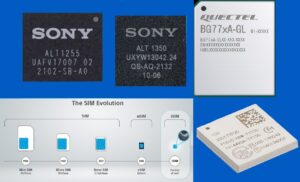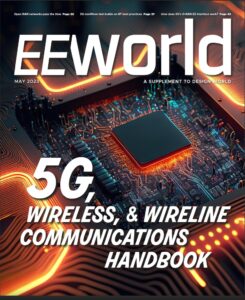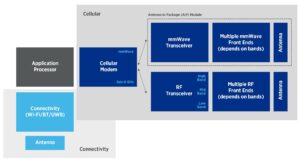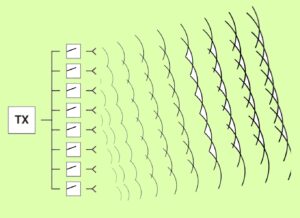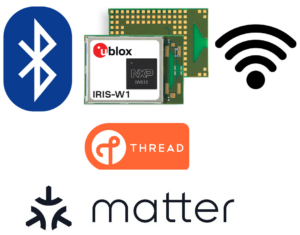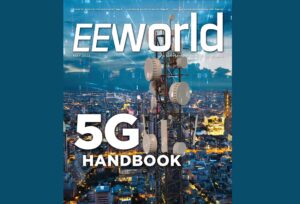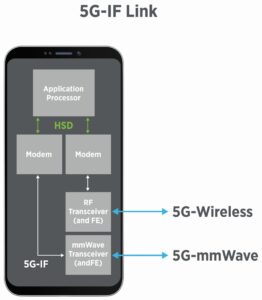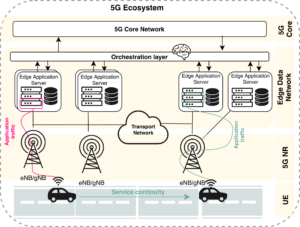5G brought architecture changes that require synchronization. Depending on the location and network site, those timing requirements require different PTP profiles and PTP capacity.
Chipset, network, module partnership brings LTE connectivity to IoT devices
Engineers designing IoT devices need to focus on the hardware and software for their device’s applications such as smart meters, logistics tracking devices, and so on. For many designers, connectivity is not their area of expertise. Soracom, a provider and SIM cards and eSIM devices for IoT, has partnered with Sony Semiconductor (formerly Altair) and […]
EE World’s 2023 communications handbook is here
Our 2023 5G, Wired, & Wireless Handbook is now available in ebook form. Download your copy today. It started on a cold January day with an editorial call. A month later, the abstracts came in. After another month, the manuscripts came in. Then came the editing and some back-and-forth with the authors. Next, it was…
5G mmWave test builds on RF best practices
The high level of integration in today’s mmWave phone means traditional test methods no longer apply.
Test methods for mmWave AiP designs bring tradeoffs
Engineers have several mmWave over-the-air test methods available for evaluating phased-array antennas used in antenna-in-package designs. Each has pros and cons.
Module brings Wi-Fi, Bluetooth, Thread, and Matter to embedded designs
The IRIS-W1 module from u-blox lets IoT devices connect over Wi-Fi and Bluetooth while supporting Thread and Matter protocols. IoT module company u-blox has announced the IRIS-W1, which the company claims is the first stand-alone Wi-Fi module to combine dual-band Wi-Fi 6, Bluetooth LE (Low Energy) 5.3, and Thread including support for Matter protocols. Based […]
Customize private 5G networks for application requirements
5G private networks show potential for a wide range of diverse applications. Engineers can implement features to address the requirements of markets such as manufacturing and non-terrestrial networks.
Our second 5G Handbook is now available
Featuring 15 articles, the 2022 5G Handbook looks at private networks, timing, connectivity, latency, mmWaves, test, and other topics.
Mitigate mmWave test costs in 5G smartphones
The economics of manufacturing test directly affect how you plan for the right number of test stations and test sites. Adding mmWave testing makes the difference.
Orchestration at the edge reduces network latency
Edge computing brings benefits to users by reducing network latency, thus improving services, but needs management orchestration. Here, we demonstrate how orchestration improves latency in an automotive edge-computing use case by reallocating network resources. Multi-access edge computing (MEC), commonly called “edge computing,” moves data processing to the edge of communication networks. Bringing computing close to…


